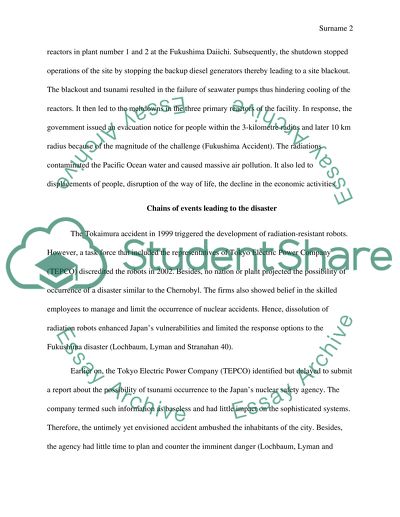Cite this document
(“Fukushima power plant disaser Essay Example | Topics and Well Written Essays - 1500 words”, n.d.)
Fukushima power plant disaser Essay Example | Topics and Well Written Essays - 1500 words. Retrieved from https://studentshare.org/history/1689433-fukushima-power-plant-disaser
Fukushima power plant disaser Essay Example | Topics and Well Written Essays - 1500 words. Retrieved from https://studentshare.org/history/1689433-fukushima-power-plant-disaser
(Fukushima Power Plant Disaser Essay Example | Topics and Well Written Essays - 1500 Words)
Fukushima Power Plant Disaser Essay Example | Topics and Well Written Essays - 1500 Words. https://studentshare.org/history/1689433-fukushima-power-plant-disaser.
Fukushima Power Plant Disaser Essay Example | Topics and Well Written Essays - 1500 Words. https://studentshare.org/history/1689433-fukushima-power-plant-disaser.
“Fukushima Power Plant Disaser Essay Example | Topics and Well Written Essays - 1500 Words”, n.d. https://studentshare.org/history/1689433-fukushima-power-plant-disaser.


